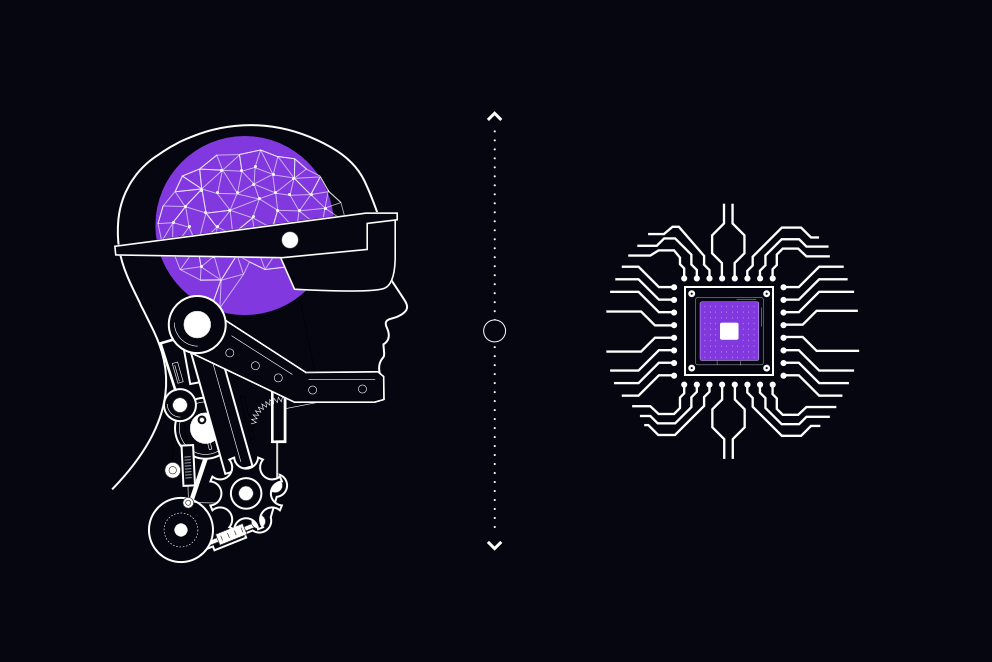Trading is powered by thought
They say the most difficult part of travelling through time is adjusting to technological differences, and this was certainly true of my trip to 2069. Fifty years from now, the idea of using a desktop computer or mobile to trade has been consigned to the history books, with the vast majority of trades executed using a holographic platform controlled by thought or speech.
Traders open positions with their minds
Undoubtedly the biggest change is the rise of ‘thought-powered trading’ (TPT), which enables traders to open or close a position in around 0.1 seconds – about as fast as a human can react. This change sees traditional inputs, such as a keyboard and mouse, replaced by electrical signals from the brain.
The system reads thoughts and translates them into all the inputs required by the trading platform. Traders can choose the market they wish to trade, select their position size, and decide where to place stops and limits – all without moving a muscle.
Professional traders get brain-augmentation surgery
The first step for any trader looking to realise the benefits of TPT is to choose between a headpiece, worn externally, and an internal microchip, which must be inserted through brain-augmentation surgery.

While the vast majority of traders opt for headpieces, the surgical option is generally preferred by professionals as it enables them to react more quickly to changing market conditions when they are away from their desks.
Traders can sense the markets moving
Both headpieces and microchips are capable of stimulating neurons, as well as reading them, and this stimulation has three key benefits for traders. Firstly, it enables them to ‘see’ the trading platform without a real-world monitor, meaning they can pull up an in-built ‘second screen’ at any time of their choosing. The platform overlays a trader’s existing visual field and can be resized according to personal preference.

Secondly, neural stimulation can be used to control emotional responses. While this is most commonly used to inhibit emotion and increase rational thought, some traders choose to enhance the positive feelings associated with winning trades and the negative feelings associated with losses.
Thirdly, neural stimulation can trigger sensory responses, such as auditory sensations or muscle spasms, to alert users to positive or negative market moves. This ties traders to the markets physically, providing immediate feedback when they are unable to monitor the markets themselves. As an example, a trader could opt to ‘hear’ an alarm if a market moves against them in the night. This would wake them up, enabling them to take the appropriate action.
Traders benefit from brain-to-brain social interactions
Both headpieces and implants facilitate social functions, enabling traders to see what their friends and contacts are thinking in real time. Additionally, traders can view aggregated ‘market sentiment’ data for a higher-level view of what people in their extended network are thinking.
Traders can also communicate with each other brain-to-brain. While the participants hear this as they would an ordinary chat, the interactions occur silently and can take place over any distance.
Could this really happen?
With time travel known to disrupt the space-time continuum, our experts take a look at how likely it is that these events will come to pass…
The view from 2019
It might sound like the stuff of science fiction, but thought-powered trading, hardware-induced neural stimulation and brain-to-brain communication have already been subject to extensive research by academics and commercial entities.
Frontiers in Systems Neuroscience, for example, cites 150 papers by 503 authors on subjects related to brain augmentation, while the US military is investing millions to develop neural implants. Commercial entities contributing to R&D in these areas include Facebook and Microsoft, as well as high-profile startups such as Emotiv, Kernel and Elon Musk’s Neuralink.
Recent research has demonstrated the feasibility of controlling software applications via brainwave, electronic stimulation of the auditory and visual systems, and even brain-to-brain communication – with participants sitting in France and India reportedly able to communicate at a basic level using just their thoughts. Of course, significant challenges remain and commercialisation of many of these technologies is likely still decades away. However, mass adoption of such innovations by 2069 is not beyond the realms of possibility.


